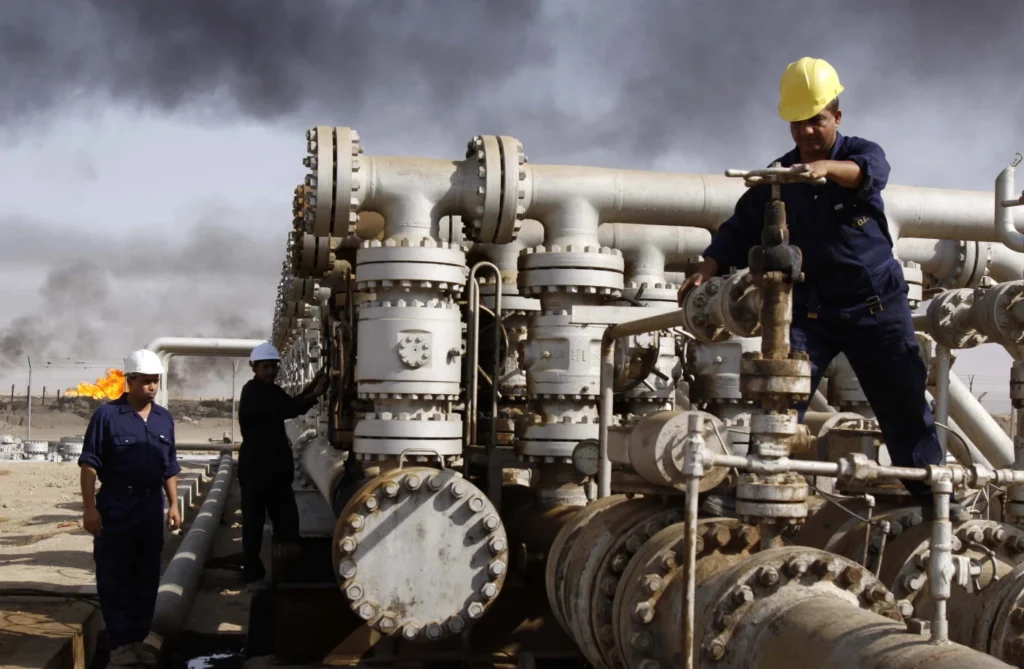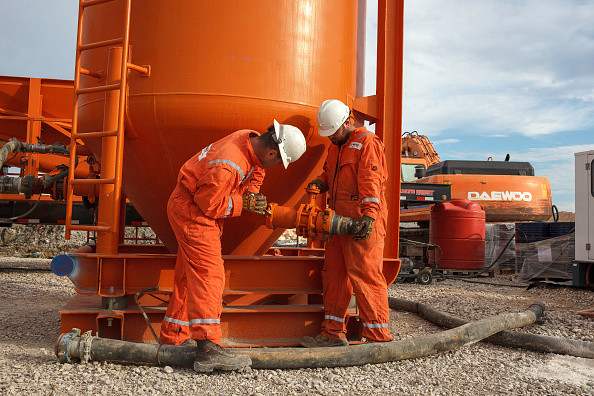Baghdad, April 28, 2025 —
Restoring Syrian Oil is actively studying the possibility of restoring the Kirkuk-Baniyas oil pipeline, a historic export route that once transported Iraqi crude oil to the Mediterranean Sea through Syria. If successful, the move could significantly boost Iraq’s oil export options and offer Syria a much-needed economic and energy boost after years of conflict and sanctions.
According to senior Iraqi government sources, a high-level delegation from Iraq’s National Intelligence Service recently visited Damascus for talks with Syrian officials. The discussions reportedly focused on regional security cooperation, cross-border trade, and, most notably, plans to rehabilitate the long-defunct oil pipeline that once linked Kirkuk’s massive oil fields to the Syrian port of Baniyas.
The Kirkuk-Baniyas pipeline, originally built in the early 1950s, was a critical artery for Iraq’s oil exports for decades. However, political tensions between Iraq and Syria, particularly during Saddam Hussein’s rule, led to its closure in 1982. The pipeline infrastructure was later severely damaged during the 2003 Iraq War, leaving it inoperable for more than two decades.
Now, as Iraq looks to diversify its oil export routes beyond Turkey, reviving the Syrian pipeline has become an attractive option.
Strategic Reasons Behind the Move
Iraq’s oil industry, a vital part of its economy, has faced numerous challenges in recent years. One of the country’s main export paths, the Kirkuk-Ceyhan pipeline through Turkey, has been plagued by political disputes, sabotage, and technical issues. Dependence on a single export corridor has often left Iraq vulnerable to disruptions, costing the country billions of dollars in lost revenue.
Restoring the Kirkuk-Baniyas pipeline would provide Iraq with a direct route to the Mediterranean Sea, allowing it easier access to European and global markets. Analysts believe this could enhance Iraq’s energy security, increase its export capacity, and reduce shipping times and costs compared to routes through the Persian Gulf.

Syria, on the other hand, stands to benefit greatly from this project. After more than a decade of civil war, Syria’s energy sector is in ruins. Domestic oil production has plummeted, and the country struggles with chronic fuel shortages. Efforts to purchase oil on the international market have been complicated by Western sanctions, making alternative energy sources crucial for Damascus.
A restored pipeline could help Syria not only secure a steady supply of oil but also generate transit fees, offering much-needed revenue to rebuild its battered economy.
Major Challenges Ahead
While the plan to revive the Kirkuk-Baniyas pipeline looks promising on paper, it faces significant obstacles in reality.
First and foremost, the physical condition of the existing pipeline is a major concern. After decades of abandonment, large sections of the pipeline are likely to be severely corroded, vandalized, or even completely destroyed. Rebuilding or replacing the damaged sections would require massive investment and complex engineering work.
Security is another pressing issue. Both Iraq and Syria continue to deal with insurgent groups, including remnants of ISIS, that operate in remote areas along the proposed pipeline route. Protecting the infrastructure would demand strong coordination between the two governments and possibly international support.
Political and diplomatic challenges are also at play. The Syrian government remains under heavy U.S. and European sanctions, and any collaboration with Damascus could expose Iraq to international criticism or secondary sanctions. Baghdad would need to carefully navigate these pressures while pursuing its economic interests.
Moreover, regional players such as Turkey, Iran, and the Gulf countries are likely to closely monitor Iraq’s plans. The reactivation of a Syrian export route could shift power dynamics in the Middle East energy sector, leading to new rivalries or partnerships.
A Long-Term Vision for Iraq’s Oil Exports
Despite these challenges, Iraq seems determined to explore all possibilities to boost its oil sector resilience. Oil sales account for over 90% of Iraq’s government revenue, making the stability and expansion of export options a top priority.
Energy experts suggest that Iraq is looking at a multi-pronged approach: modernizing its existing infrastructure, expanding refinery capacity at home, securing new export routes through neighboring countries, and exploring joint energy projects with regional partners.
The Kirkuk-Baniyas pipeline fits into this broader vision. If the project moves forward, it could symbolize a new phase of cooperation between Baghdad and Damascus, once bitter rivals, and potentially contribute to wider regional stability.
Conclusion
The talks between Iraq and Syria mark the first serious attempt in decades to revive the historic Kirkuk-Baniyas pipeline. While the path ahead is full of technical, security, and political hurdles, the potential benefits for both nations are undeniable.
For Iraq, it offers a chance to diversify its oil exports and strengthen its economy. For Syria, it provides an opportunity to rebuild its energy sector and generate much-needed income.
Only time will tell whether this ambitious plan will succeed. But for now, both Baghdad and Damascus seem willing to take the first steps toward turning an old dream into a new reality.



